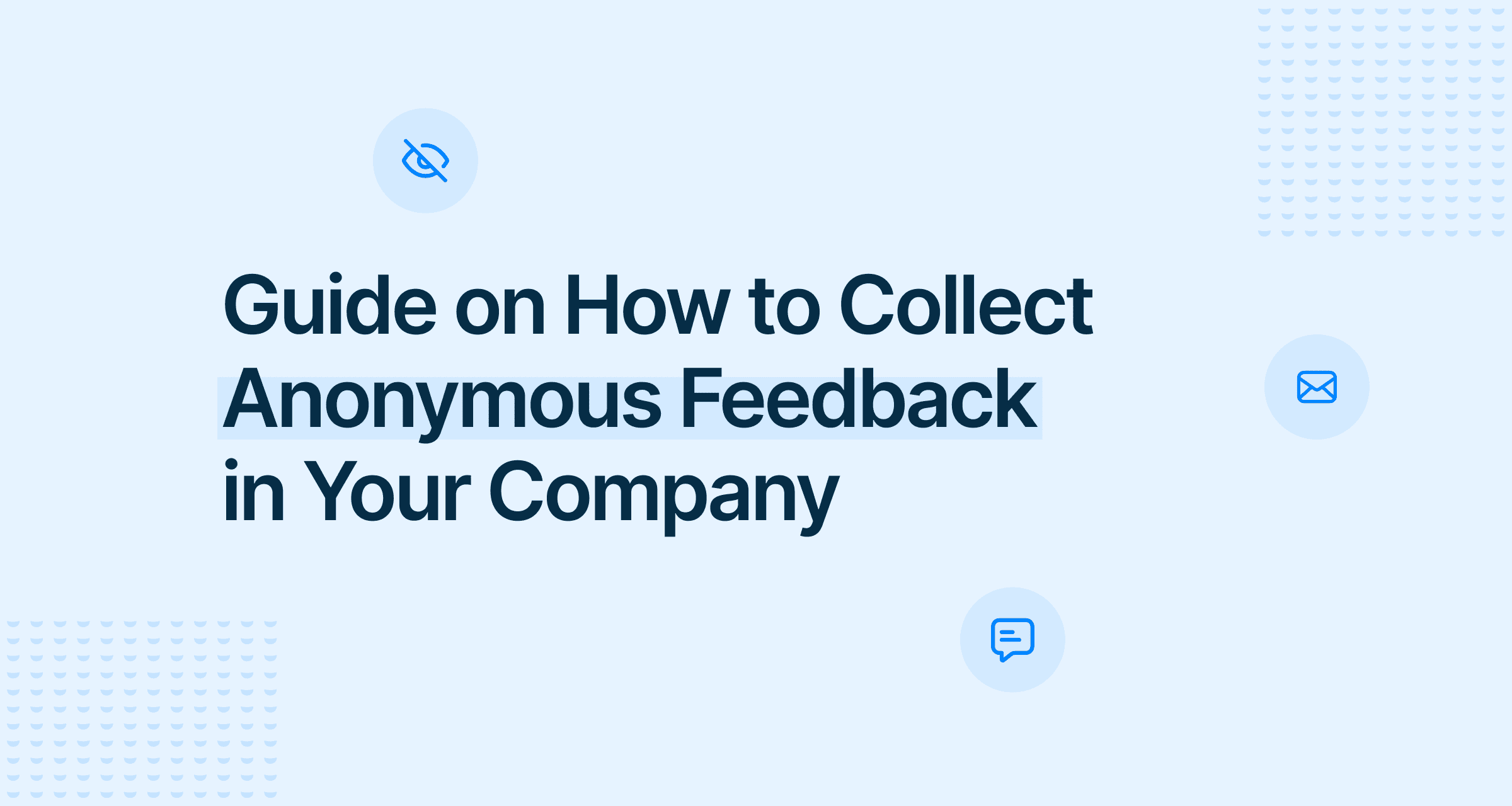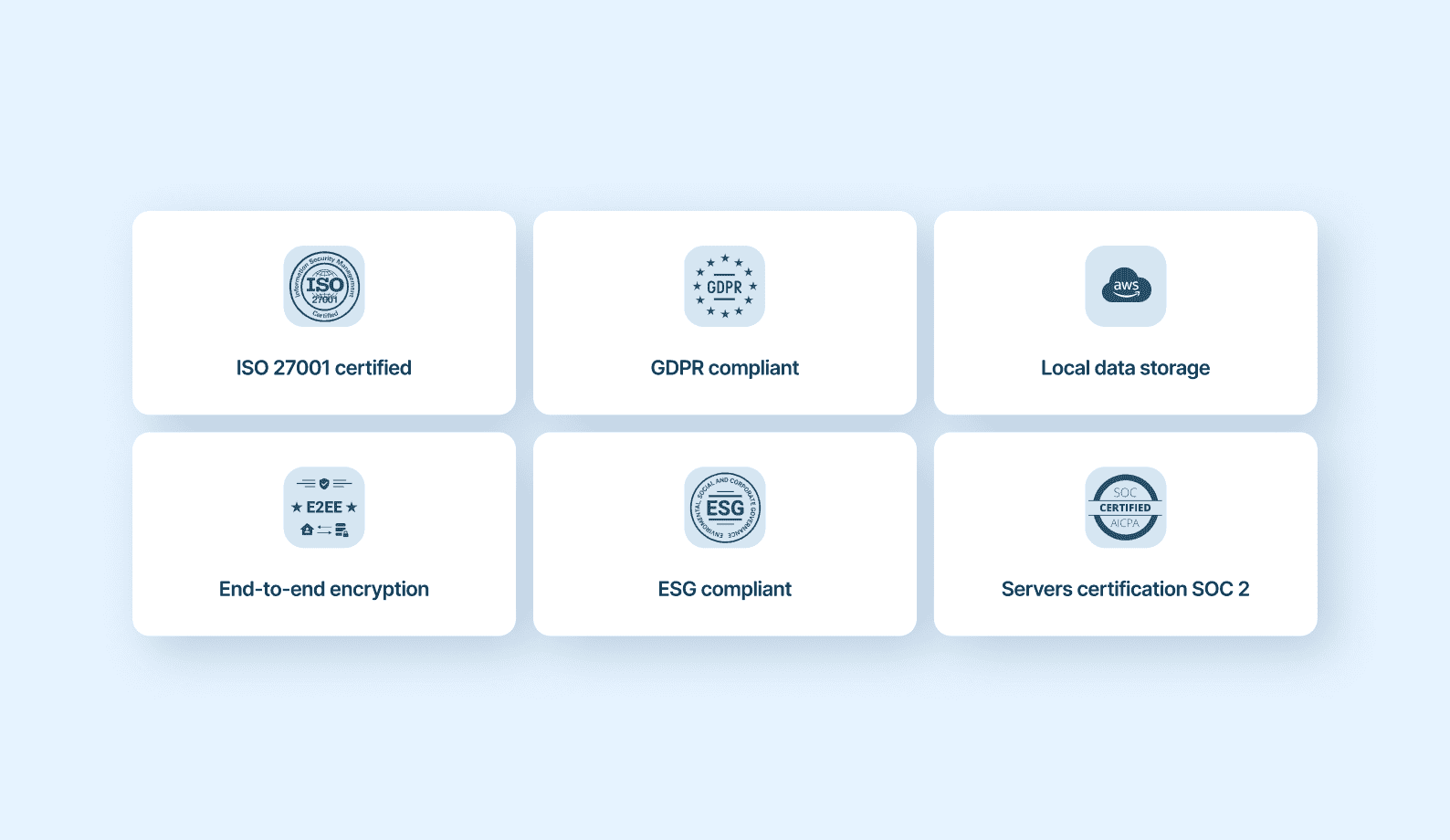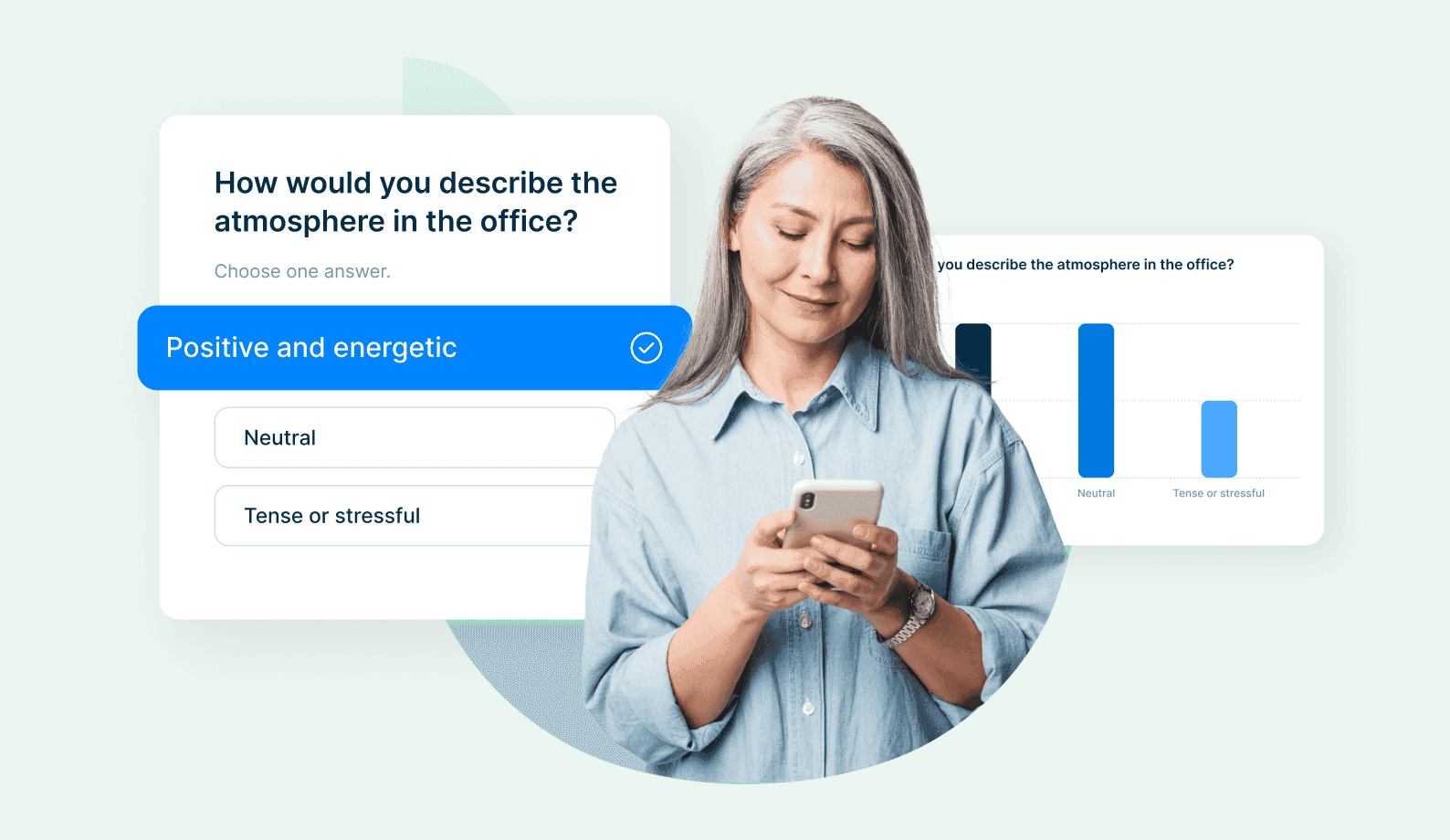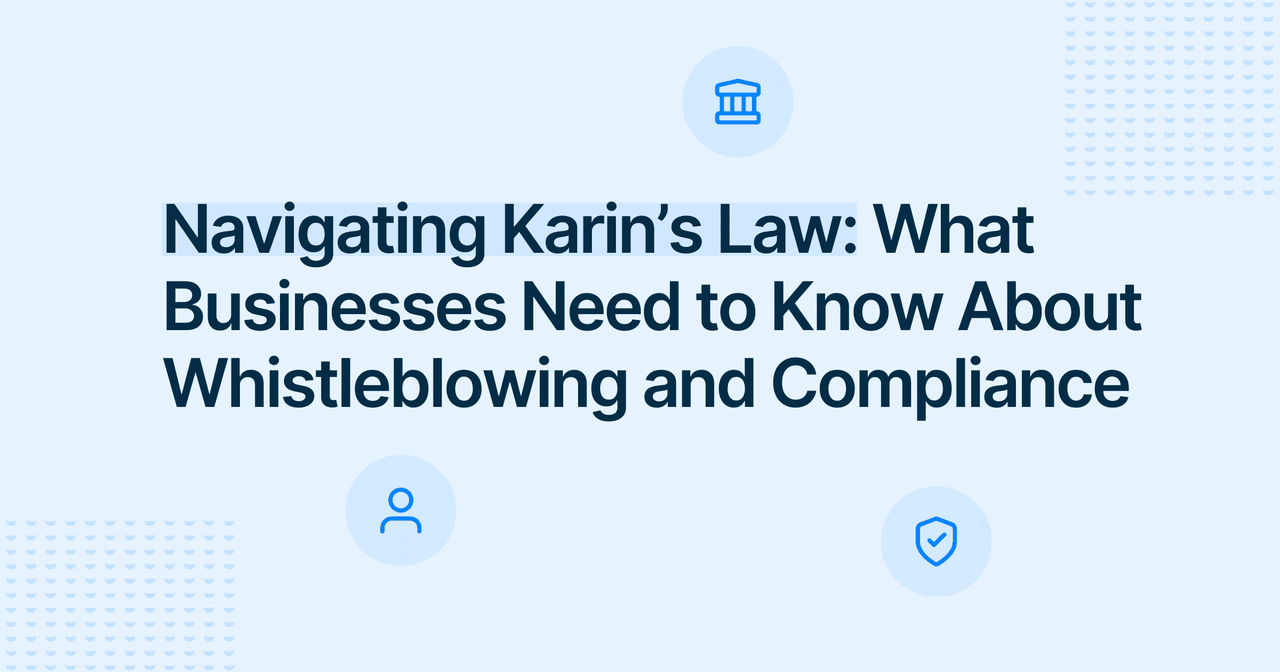



Try FaceUp Today
Set up anonymous reporting in minutes and start building a stronger, safer culture.
Whistleblowing

Yeva Bartkiv
Copywriter
Published
2025-01-20
Reading time
8 min


Table of contents
Subscribe to our newsletter
Did you know that 68% of employees leave their jobs because they feel unheard of? Companies that prioritize anonymous employee feedback enjoy 21% higher profitability and 50% lower turnover. The stakes couldn’t be higher: mastering the art of collecting anonymous employee feedback is essential for boosting employee engagement, building trust, and fostering a positive work environment.
But relying on outdated suggestion boxes or essential tools won’t cut it. You need a robust survey tool to create anonymous surveys with diverse question types like multiple-choice and open-ended questions. By gathering honest feedback and turning it into actionable insights, you’ll unlock solutions that improve employee satisfaction, retention, and decision-making. This guide will show you how to collect anonymous feedback effectively and implement tools that help you quickly gather feedback.
Previously, we touched on some worst-case scenarios that can arise if you don’t adopt feedback software - miscommunication, disengaged employees, and hidden frustrations bubbling under the surface. But now, let’s focus on the bright side! Let’s see how anonymous feedback can transform your workplace into a collaboration, trust, and growth hub. Here’s why it’s a total game-changer:
When employees know their identities are protected, they feel safe to voice their honest thoughts - no sugarcoating, just the truth.
Anonymous feedback can act as a flashlight, revealing challenges that might remain hidden. Nothing stays swept under the rug, whether process inefficiencies or workplace tensions.
Knowing their opinions matter inspires employees to invest more in the company’s success. When feedback drives visible change, the team feels valued and motivated.
Leaders gain access to unfiltered insights that fuel smarter, data-driven decisions. For instance, a multinational firm rolled out an anonymous feedback tool and uncovered recurring concerns about leadership transparency. By addressing these concerns head-on, they achieved a remarkable 20% improvement in employee satisfaction.
A culture of open communication fosters trust and inclusivity. Employees feel heard, appreciated, and part of a larger mission.
Honest, barrier-free feedback often sparks creative solutions and new ideas. It’s like giving your team a key to unlock their collective potential.

To harness the full potential of anonymous feedback, overcoming these common obstacles effectively is essential. Here's how to collect anonymous employee feedback while addressing the challenges that may arise:
Employees may hesitate to share their thoughts, worrying their feedback could lead to negative consequences. To overcome this, use a trusted app for anonymous feedback that reassures employees their identity is genuinely protected.
Doubts about whether anonymity is indeed maintained can prevent employees from participating. Knowing how to create an anonymous feedback form with the right tools ensures confidentiality and boosts participation.
Not all platforms are designed to meet organizational needs or guarantee anonymity. Choosing the best anonymous feedback tool or an app for anonymous feedback tailored for your team ensures you can collect input anonymously with confidence.
Feedback is only valuable when it drives real change. Leaders must know how to collect anonymous feedback online and turn the results into actionable strategies that improve engagement.
Overcoming these challenges requires a strategic approach. By learning how to collect anonymous feedback in teams, selecting the right platforms, and leveraging tools that easily create anonymous feedback forms, you can foster trust, encourage participation, and unlock the power of anonymous team feedback.
Start by selecting a tool designed for secure and anonymous feedback collection. Look for features like:

Well, here’s the thing: you’ve pulled out all the stops. You’ve invested in the best tools, brought in experts to pave the way, and prepared a highway to success that’s smoother than butter. But here’s the little hiccup - oops! You forgot to invite your team to join the ride.
Sure, they might have caught wind of this new feedback software floating around, but without a proper introduction, it’s like handing them a shiny new gadget without a manual. It’s not second nature to them yet; it hasn’t become their go-to superhero in the daily grind.
What’s missing? A proper introduction, a guided tour, and a chance to roll up their sleeves and explore. Once your team knows this tool’s purpose, they’ll be cruising down the fast lane of productivity.
FaceUp has been a game-changer in transforming internal communication for organizations. It enables the collection of anonymous employee feedback to address previously hidden challenges. Before adopting FaceUp, many teams struggled to foster a culture of honest feedback, and employees felt hesitant to share their concerns openly.
By utilizing FaceUp's anonymous surveys and user-friendly survey tools, organizations created a safe environment where team members felt comfortable sharing their thoughts without fear. This breakthrough improved employee engagement and identified key areas for improvement.

The platform's intuitive design, including ready-to-use templates and diverse question types like multiple-choice and open-ended questions, streamlined the feedback process. Organizations benefited from collecting real-time and candid feedback from respondents, allowing leadership to uncover valuable insights that drove actionable change. These insights directly enhanced the work environment and addressed long-standing morale and productivity issues.
In addition, FaceUp’s suggestion boxes offered employees another avenue to voice their concerns and ideas anonymously, reinforcing a culture of trust and transparency. The ability to gather actionable insights through anonymous reporting improved employee satisfaction, supported better decision-making, and boosted retention rates.

Implementing anonymous feedback mechanisms is more than a process - it’s a commitment to fostering trust, improving engagement, and driving meaningful change. To maximize the benefits of anonymous employee feedback, here’s how to ensure your approach is both practical and impactful:
Make it simple for employees to share their feedback anytime, anywhere. Use a feedback platform that works across desktop and mobile devices, allowing team members to submit input in a way that’s convenient for them. Accessibility increases participation and ensures that every voice can be heard.
Trust is the backbone of anonymous feedback. Ensure your platform includes strong security measures such as end-to-end encryption, IP masking, and metadata removal. This reassures employees that their identity will remain confidential, encouraging honest feedback.
Communicate what types of feedback are helpful and constructive. Provide examples to guide employees on how to frame their suggestions or concerns. This improves the quality of the collected feedback and aligns it with actionable outcomes.
Simplify the feedback process using templates tailored to specific scenarios, such as performance reviews, project feedback, or workplace satisfaction. Customizable options save time while ensuring you gather the most relevant insights.
Incorporate a mix of multiple-choice, rating scales, and open-ended questions to capture quantitative data and qualitative insights. This combination provides a fuller picture of employee sentiment and allows you to uncover deeper trends or concerns.
Feedback isn’t a one-time event. Conduct anonymous surveys quarterly or biannually to maintain momentum and signal that feedback is a continuous priority. Regular cycles also allow tracking progress and addressing recurring issues over time.
Transparency doesn’t stop collecting feedback - it extends to showing employees that their voices matter. After gathering feedback, communicate the steps to address key issues. This follow-up builds trust and demonstrates your commitment to making positive changes.
Use real-time analytics and insights platforms, allowing leaders to act swiftly on feedback. Dashboards with clear metrics and summaries help leadership pinpoint critical areas and prioritize actions.
Managers play a crucial role in interpreting and acting on feedback. Equip them with the skills to analyze data, identify trends, and develop effective action plans. Training ensures that feedback doesn’t just sit idle but becomes a driver of organizational growth.
By following these best practices, you’ll not only master how to collect anonymous feedback in teams but also create a culture of trust, transparency, and ongoing improvement that strengthens your workplace from within. Remember: feedback isn’t just information - it’s the foundation of a thriving, engaged workforce.
Collecting anonymous feedback is not just about manual work; it’s about building trust, empowering employees, and driving positive change. With the right tools and approach, you can unlock invaluable insights and create a more engaged and satisfied workforce.
Actions speak louder than words - take charge of your team’s feedback process today by booking a demo with FaceUp.




Set up anonymous reporting in minutes and start building a stronger, safer culture.
Keep Reading

Alaa El-Shaarawi2025-12-197 min
Workplace Environment

Marie Roland2025-12-165 min
Whistleblowing

Alaa El-Shaarawi2025-12-087 min
Workplace Environment